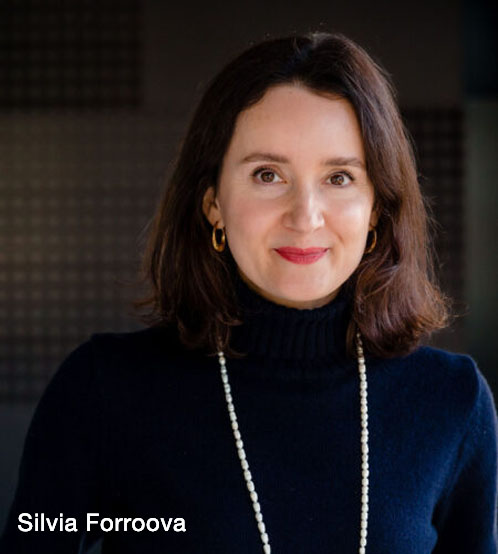Silvia will be chairing one of the panel discussions — “Sustainability: An Open Dialogue for a Brighter Future. Stronger Together!” — at the event during a dedicated sustainability track on 25 January.
She will address, alongside an expert panel, how the industry can move toward a greener supply chain … with learnings for companies that want to understand how they can contribute.
A key topic is how should they go about evaluating their current impact and be taking a gradual approach to reducing total lifecycle carbon use and waste.
This issue has taken on increased importance as companies are being asked to not only look at their direct environmental impacts, but scope 3 emissions from the Paris accord as well.
In fact, CPHI’s own pharma sustainability report has identified scope 3 emissions that occur throughout the supply chain that are particularly difficult to quantify; this is because of challenges related to identifying indirect emissions from third-party contributors.
Significantly, particularly in a complex multi-supplier industry such as pharmaceuticals, scope 3 emissions account for the majority of a company’s carbon footprint.
KSR: Why are scope 3 emissions increasingly at the forefront of debate now?
SF: Partly because there is a global focus on these emissions, but also because they have so far been the hardest to track. For clarity, scope 1 emissions are those directly from the manufacturing process, scope 2 emissions are indirect — often from the sources of energy usage within the supply chain — whereas scope 3 emissions are from the indirect emissions of partners.

The challenge in a globalised supply chain, often with many supply partners, is being able to map a product’s true impact (including scopes 1 and 2 from all partners); so, even for the biggest of companies, this is an incredibly complex undertaking.
KSR: What can you tell us in terms of successes?
SF: One of the big successes has been the existing collaborations we have seen in the industry, as this issue is bigger than any one company. The other aspect of this session is that we encourage the industry to see this as a journey; you don’t need to try to transform your entire operations in an instant.
What we are doing, with our expert partners, is trying to break it down into more manageable steps and share best practices regarding how you go about establishing short-term goals, mid-term planning and working toward a longer-term sustainability plan.
One of the easiest and best ways to start is just to get out there and meet the right partners and groups that can help you to get a grasp of your current position.
We hope that through our community, purposeful partnerships and meaningful content, you will get ideas and the support needed to put sustainability at the heart of your business.
KSR: Pharmapack is known as an innovation focused event. Is there a dichotomy between this and sustainability?
SF: It’s a very challenging area, particularly as many of the cutting-edge innovations are now emerging from smaller companies that might not have the same resources to explore sustainability as a larger one. So, what we want to do is provide a platform that brings in many of these companies together to share learnings.
One of the learnings we already have is from packaging; when we partner across different stakeholders, with groups such as Alliance to Zero, for instance (who will speak at the event on day two), we are able to advance towards sustainability goals faster.
The other encouraging aspect I would say is that many of the exhibitors at Pharmapack have made tremendous strides in terms of material selection, recycling and the total lifecycle impact of product development through to the patient and disposal.
KSR: What is Pharmapack’s role?
SF: We have always been an enabler of sustainability, particularly at Pharmapack where this issue has a long history; but what we are trying to do in the next few years is deliver much more.
It’s one of those events where you get the needed critical mass of stakeholders together in one place so that we can accelerate the wheels of change. And, of course, our next sustainability report with all these case studies and learnings will be ready by late spring.
Additionally, we are also trying to lead by example, so we have been running our Better Stands programme now for a few years and it’s easier than ever to join our events in a sustainable way.
KSR: Can the learned lessons go both ways, such as from small to large?
SF: This is such an important point and one I think we often overlook; yet, this approach of shared innovation has been one of the central tenets of Pharmapack. It’s going to be so important when we look for newer packaging tools and devices and even materials.
One, can the large-scale lessons come down from pharma and device makers? And, two, can we also bring their attention to innovative solutions from smaller companies at the base of the chain?
These companies are often much more agile and can consider many options with much faster development timelines to produce solutions with drastic improvements. It’s often at our event that the debate then shifts to how, in partnership — whether licensed, acquired or a development collaboration — these innovations can be scaled-up or implemented.
And it’s not just in terms of whether an individual idea is commercial, but how it also might lead to future options; we’re always looking to advance the base of knowledge within the industry.
This has been a highly encouraging aspect of sustainability. For Pharmapack, this will be a big area for the future in how we can use our platform to facilitate, engage, promote and encourage this sharing. It will be one of the biggest areas we are looking at in the years ahead.
